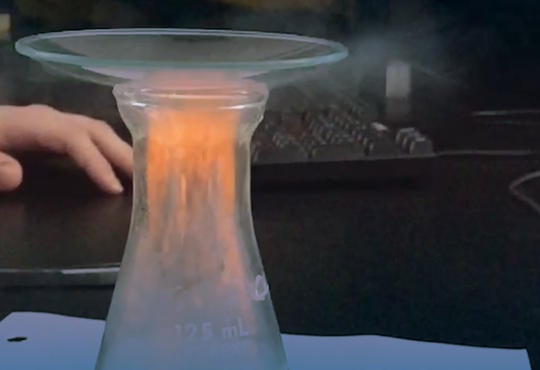[This article is a reprint from the STAO blog, https://staoblog.org/. STAO encourages teachers to contribute their teaching ideas to the blog.]
Health Canada issued an advisory this past summer, suggesting that exposure to boron substances be reduced as much as possible from all sources. They identified boron substances as a developmental and reproductive health risk. They also stated that parents should not make slime and putties with borax and boric acid. By extension, teachers began to question the safety of making slime in their science classes. In response to questions posed by the Science Teachers’ Association of Ontario (STAO) Safety Committee, Health Canada has clarified their advisory issued this past summer. Regarding the use of Borax/Boric Acid, Health Canada wrote:
The proper use of gloves and goggles will reduce exposures to chemical substances. The main concern with the use of boron-containing substances for making slimes or putties, is with accidental or intentional ingestion. This ingestion hazard is mainly targeted at young children who are prone to hand-to-mouth activities.
High school students, who have received proper training in hazardous material handling, and who are properly supervised to prevent ingestion, would be at low risk of exposure to boron, or other hazardous materials used as part of a science curriculum. The safe disposal of any boron containing substances should be closely monitored to prevent accidental or intentional ingestion.
Students younger than high school age, and those who have not been properly advised in the safe handling of laboratory chemicals should not be using borax, or any other hazardous chemicals at home or in a school setting
Suggestions for activities involving borax or boric acid:
Although the chemicals containing boron do not readily cross the skin barrier, steps could be taken to prevent skin contact. Students could be issued gloves, or alternatively, the ingredients for slime could be placed in a sealed plastic bag and then mixed. Students should be instructed to wash their hands at the end of the lab activity. Teachers should then collect the slime prior to dismissal to ensure that accidental or intentional ingestion does not occur. The slime can then be thrown out with the regular garbage.
Some suggested safer alternatives, for making slime or putties involving glue, have a high volatile organic compound (VOC) content and release this into the air. However, other glue-and borax-free recipes are available on-line and teachers are encouraged to explore the use of these safer alternatives.
We hope that the information in this response will help you in making an informed decision as to the use of boron containing substances in teaching science. Our safety committee can be contacted with your safety questions at info@stao.org, attention STAO Safety Committee.
Editor’s note: Since not eating in the lab (or eating anything made in the lab) is already a rule that should be followed in the high school classroom, it looks like making slime should not be a problem.






